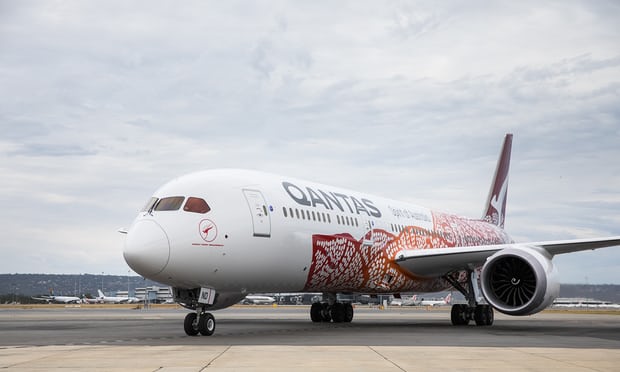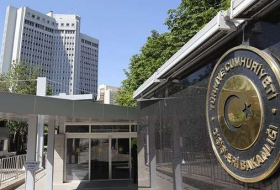Qantas flight QF9, a Boeing 787-9 Dreamliner with more than 230 passengers and crew on board, touched down at 5.03am at Heathrow on a chilly Sunday morning to a welcome from ground staff.
The landing marked the first commercial passenger jet journey direct between Australia and Europe and has been described as a “game-changer” by some in the aviation industry.
The Dreamliner, which Qantas says has 20% better fuel efficiency than similar-sized aircraft, covered the 14,875km with no major dramas.
Passengers did have to endure a period of some turbulence as the plane skirted Cyclone Marcus, a storm off the west coast of Australia, shortly after take-off.
QF9 departed Perth at approximately 6.57pm local time with the company CEO, Alan Joyce, the Australian trade and tourism minister Steve Ciobo and pack of journalists on board.
On arrival at Heathrow the plane was greeted by parade of vehicles on the tarmac with lights flashing.
After touchdown Captain Lisa Norman, who was one of four working pilots on board, said: “I would like to welcome you to the history book of aviation.
“The world has been watching us today. Thank you for being part of something so magical and so special.”
Joyce gave a short speech over the plane’s intercom shortly before landing in which he congratulated the crew and passengers for making history.
“Today we are on this amazing historic flight which is the fastest flight between Australia and the UK that has ever occurred. So congratulations on this amazing occasion.”
Many of the fare paying passengers on board had specially booked the flight to be part of what they called a moment in history.
Mark Andreassen, 57, from Perth, was one of those onboard QF9.
“I talked to one guy who came from Hong Kong to get this – he was going to London anyway but he went to Perth first,” he said.
Qantas hopes the inaugural flight will not only open up Western Australia to more British tourists bit also be a precursor to a non-stop journey between London and Sydney.
The idea of extreme long-haul travel has also prompted the company to consider new ways to tackle jet lag across multiple time zones.
As well as varying cabin pressure and the introduction of mood lighting , Qantas is teaming up with Sydney University to measure passenger sleep and movement onboard.
Ten passengers on the first flight were fitted with medical-grade, Fit-Bit style, monitors to measure sleep and physical activity. Another device measured posture.
More about: #Qantas
















































